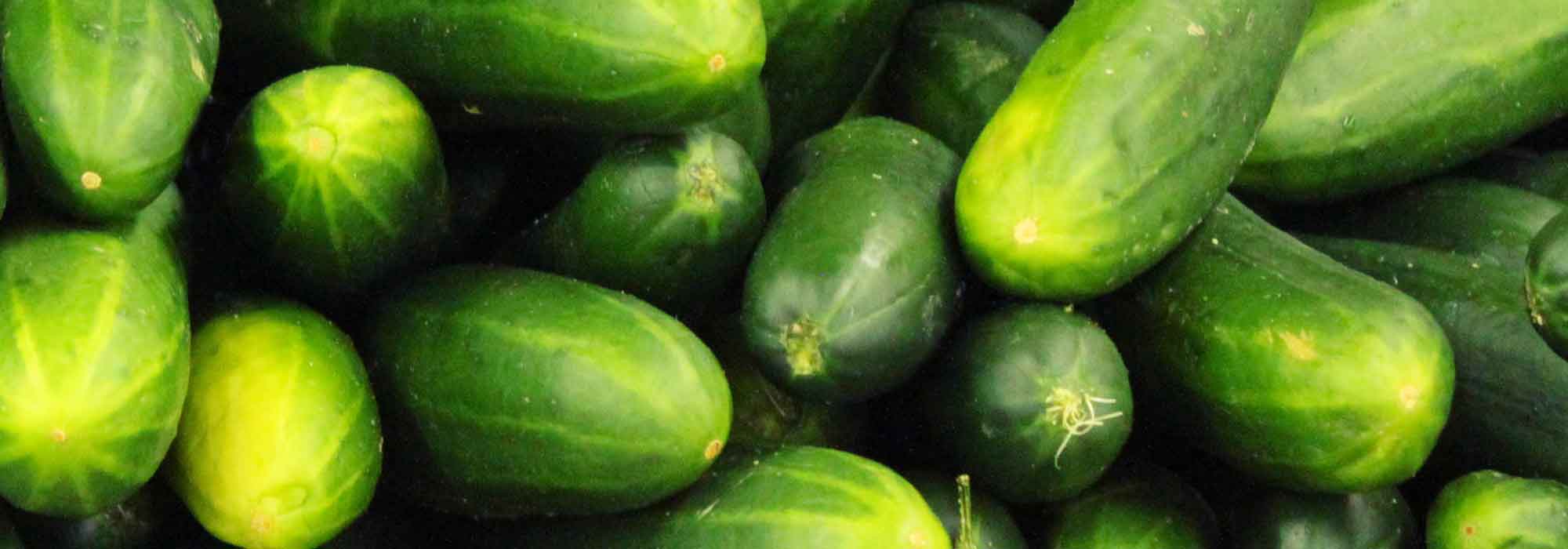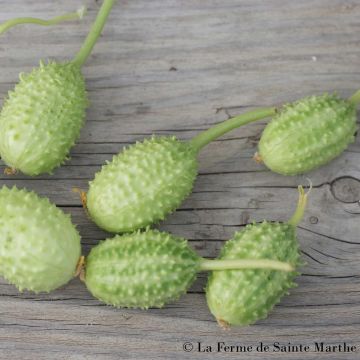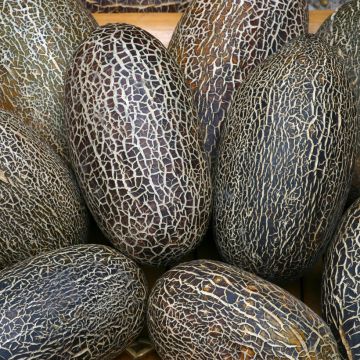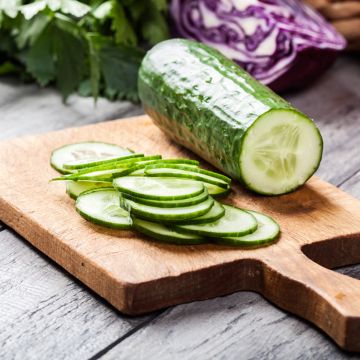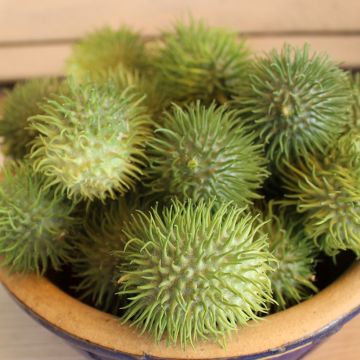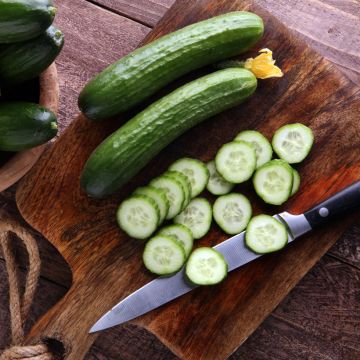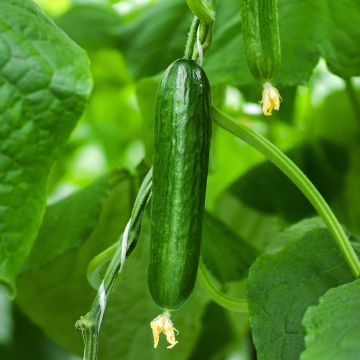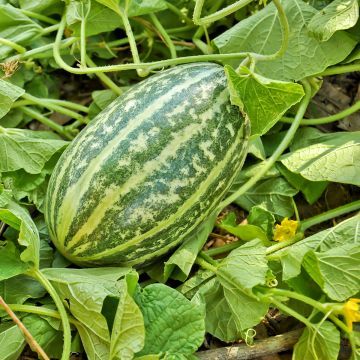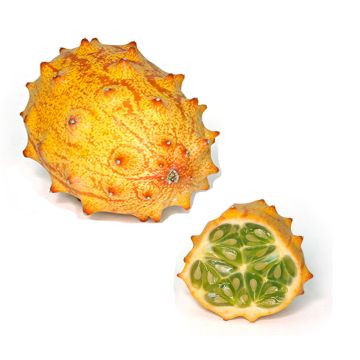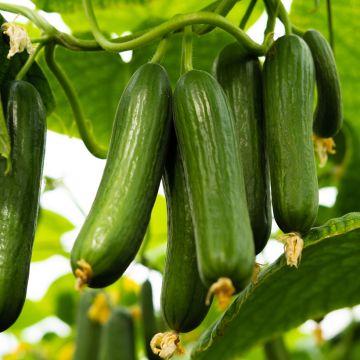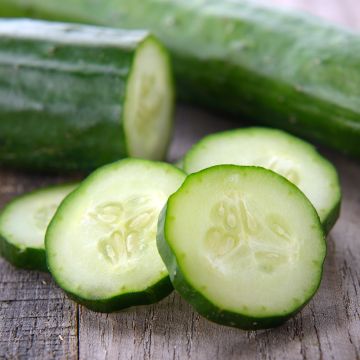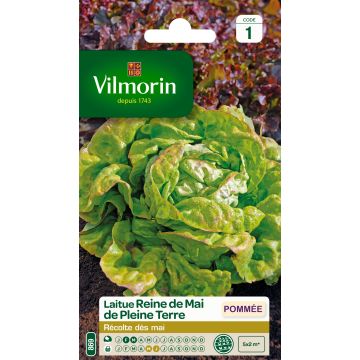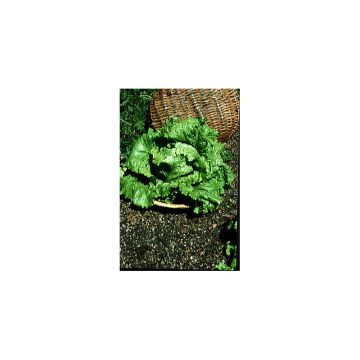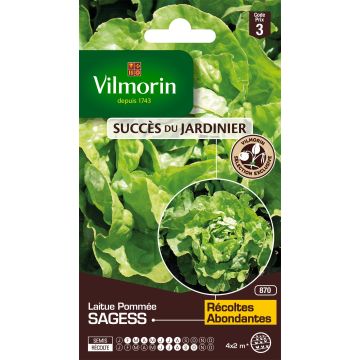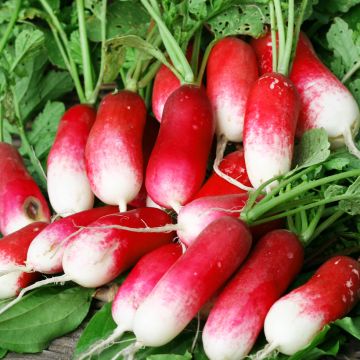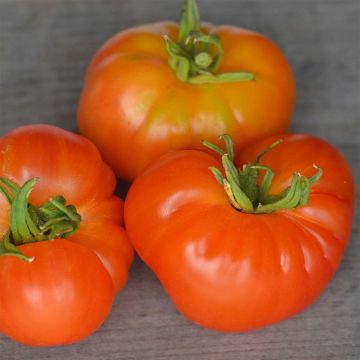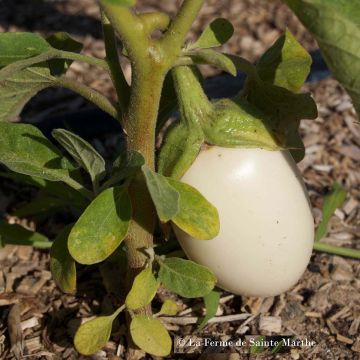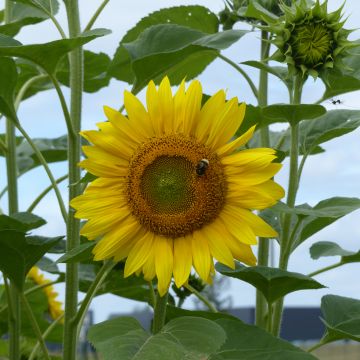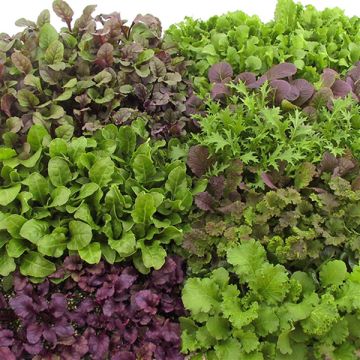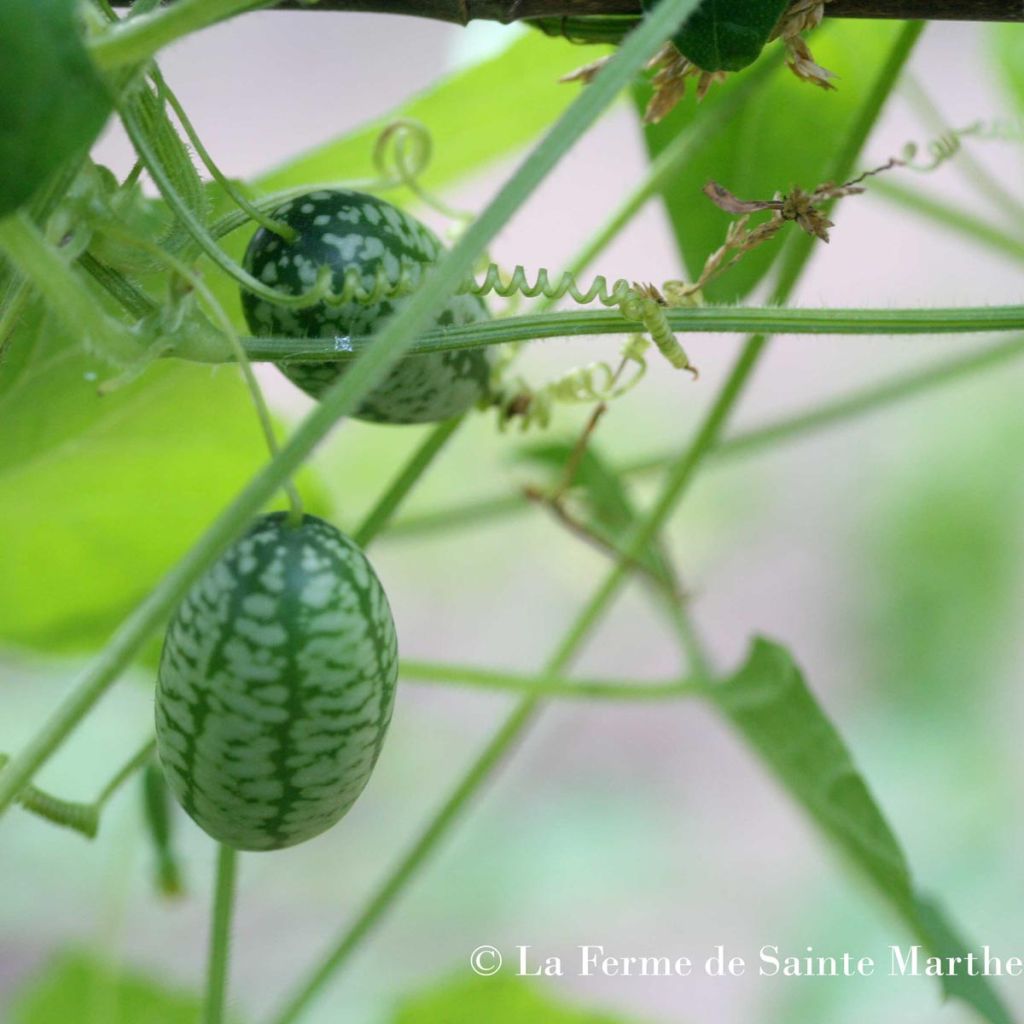

Concombre à confire Bio - Ferme de Sainte Marthe


Concombre à confire Bio - Ferme de Sainte Marthe
Melothria scabra - Ferme de Sainte Marthe Seeds
Melothria scabra
Mexican Sour Gherkin, Cucamelon, Mouse Melon, Mexican Miniature Watermelon, Mexican Sour Cucumber
This is the second time I order from you and just like the first time, no results... Yet I am passionate about gardening and I definitely have a green thumb! All the bushes and young plants that I had ordered during my first order died, despite all my careful care, and none of the seeds purchased the second time have sprouted. Therefore, I absolutely cannot recommend you.
Ingrid L., 08/11/2020
Special offer!
Receive a €20 voucher for any order over €90 (excluding delivery costs, credit notes, and plastic-free options)!
1- Add your favorite plants to your cart.
2- Once you have reached €90, confirm your order (you can even choose the delivery date!).
3- As soon as your order is shipped, you will receive an email containing your voucher code, valid for 3 months (90 days).
Your voucher is unique and can only be used once, for any order with a minimum value of €20, excluding delivery costs.
Can be combined with other current offers, non-divisible and non-refundable.
Home or relay delivery (depending on size and destination)
Schedule delivery date,
and select date in basket
This plant carries a 6 months recovery warranty
More information
We guarantee the quality of our plants for a full growing cycle, and will replace at our expense any plant that fails to recover under normal climatic and planting conditions.
Description
The Confit Cucumber, Melothria scabra in Latin, is a very unique climbing vegetable plant that produces dark green fruits with pale green stripes, measuring 2 to 3cm (1in). Their taste closely resembles that of a cucumber. They can be consumed raw, in salads or as a snack with salt, or as a condiment, pickled in vinegar, like gherkins. This small vegetable is sown from March to May for a harvest from June to September.
Originally from Central America and Mexico and belonging to the Cucurbitaceae family, the Confit Cucumber is a perennial vegetable plant cultivated as an annual in our climates. It has lobed green leaves and produces small oblong dark green fruits with pale green stripes that are harvested when they reach a size of 2 to 3cm (1in). Melothria scabra has a climbing habit and is equipped with tendrils, but you can also let it run along the ground.
It is a fast-growing, productive vegetable that thrives in the sun, in moist and humus-rich soil. Its cultivation is easy and it is resistant to diseases.
Harvest: The harvest takes place approximately 80 days after sowing and before the fruits reach their final size. It should be done very regularly, ideally every two days during the peak production period, as the fruits grow rapidly and become less interesting.
Storage: freshly harvested confit cucumbers can be stored in the refrigerator for a few days before being pickled in vinegar.
Gardener's tip: Like all cucurbits, this small cucumber can be susceptible to powdery mildew: a white coating appears on the foliage. It is advisable to remove heavily affected leaves and spray with wettable sulphur every 2 weeks. In case of minor infestation, you can also treat the plants with skimmed milk diluted in rainwater at a ratio of 10 to 20%. As a preventive measure, avoid watering the foliage and ensure proper ventilation in your greenhouse if the cultivation is done under cover. A decoction of horsetail can also be applied to strengthen the foliage's resistance.
Organic or "AB" seeds come from plants grown without phytosanitary products (insecticides, herbicides). These seeds also do not undergo any treatment after harvest. They bear the AB label and are certified by Ecocert, an independent organization.
Harvest
Plant habit
Foliage
Botanical data
Melothria
scabra
Cucurbitaceae
Mexican Sour Gherkin, Cucamelon, Mouse Melon, Mexican Miniature Watermelon, Mexican Sour Cucumber
Cultivar or hybrid
Annual
Other Cucumber seeds
View all →Planting and care
Sowing:
Sowing takes place from March to May, at a temperature of around 20°C (68°F). It is done in buckets filled with good sowing soil.
Planting in the garden takes place about 4 weeks later, when the plants are well developed and the risk of frost has passed, around mid-May.
A spacing of 60cm (24in) between plants is recommended, with rows spaced one metre apart.
Cucumber cultivation:
The cucumber for preserving is a fairly demanding vegetable, which requires well-fertilized soil. It is advisable, preferably in autumn, to add mature compost (about 3kg per m2) by cultivating it to a depth of 5 cm (2in), after having loosened the soil as is done for any vegetable cultivation. It thrives in neutral soils (pH 7) but will also do well in slightly acidic or alkaline soil (pH between 5.5 and 7.5).
It can be grown flat, but to save space, do not hesitate to use its climbing habit: on a frame covered with wire mesh, inclined at 45%, it will provide beneficial shade for lettuces or even in a teepee to bring a touch of whimsy to the vegetable garden.
Seedlings
Care
Intended location
Planting & care advice
-
, onOrder confirmed
Reply from on Promesse de fleurs
Similar products
Haven't found what you were looking for?
Hardiness is the lowest winter temperature a plant can endure without suffering serious damage or even dying. However, hardiness is affected by location (a sheltered area, such as a patio), protection (winter cover) and soil type (hardiness is improved by well-drained soil).

Photo Sharing Terms & Conditions
In order to encourage gardeners to interact and share their experiences, Promesse de fleurs offers various media enabling content to be uploaded onto its Site - in particular via the ‘Photo sharing’ module.
The User agrees to refrain from:
- Posting any content that is illegal, prejudicial, insulting, racist, inciteful to hatred, revisionist, contrary to public decency, that infringes on privacy or on the privacy rights of third parties, in particular the publicity rights of persons and goods, intellectual property rights, or the right to privacy.
- Submitting content on behalf of a third party;
- Impersonate the identity of a third party and/or publish any personal information about a third party;
In general, the User undertakes to refrain from any unethical behaviour.
All Content (in particular text, comments, files, images, photos, videos, creative works, etc.), which may be subject to property or intellectual property rights, image or other private rights, shall remain the property of the User, subject to the limited rights granted by the terms of the licence granted by Promesse de fleurs as stated below. Users are at liberty to publish or not to publish such Content on the Site, notably via the ‘Photo Sharing’ facility, and accept that this Content shall be made public and freely accessible, notably on the Internet.
Users further acknowledge, undertake to have ,and guarantee that they hold all necessary rights and permissions to publish such material on the Site, in particular with regard to the legislation in force pertaining to any privacy, property, intellectual property, image, or contractual rights, or rights of any other nature. By publishing such Content on the Site, Users acknowledge accepting full liability as publishers of the Content within the meaning of the law, and grant Promesse de fleurs, free of charge, an inclusive, worldwide licence for the said Content for the entire duration of its publication, including all reproduction, representation, up/downloading, displaying, performing, transmission, and storage rights.
Users also grant permission for their name to be linked to the Content and accept that this link may not always be made available.
By engaging in posting material, Users consent to their Content becoming automatically accessible on the Internet, in particular on other sites and/or blogs and/or web pages of the Promesse de fleurs site, including in particular social pages and the Promesse de fleurs catalogue.
Users may secure the removal of entrusted content free of charge by issuing a simple request via our contact form.
The flowering period indicated on our website applies to countries and regions located in USDA zone 8 (France, the United Kingdom, Ireland, the Netherlands, etc.)
It will vary according to where you live:
- In zones 9 to 10 (Italy, Spain, Greece, etc.), flowering will occur about 2 to 4 weeks earlier.
- In zones 6 to 7 (Germany, Poland, Slovenia, and lower mountainous regions), flowering will be delayed by 2 to 3 weeks.
- In zone 5 (Central Europe, Scandinavia), blooming will be delayed by 3 to 5 weeks.
In temperate climates, pruning of spring-flowering shrubs (forsythia, spireas, etc.) should be done just after flowering.
Pruning of summer-flowering shrubs (Indian Lilac, Perovskia, etc.) can be done in winter or spring.
In cold regions as well as with frost-sensitive plants, avoid pruning too early when severe frosts may still occur.
The planting period indicated on our website applies to countries and regions located in USDA zone 8 (France, United Kingdom, Ireland, Netherlands).
It will vary according to where you live:
- In Mediterranean zones (Marseille, Madrid, Milan, etc.), autumn and winter are the best planting periods.
- In continental zones (Strasbourg, Munich, Vienna, etc.), delay planting by 2 to 3 weeks in spring and bring it forward by 2 to 4 weeks in autumn.
- In mountainous regions (the Alps, Pyrenees, Carpathians, etc.), it is best to plant in late spring (May-June) or late summer (August-September).
The harvesting period indicated on our website applies to countries and regions in USDA zone 8 (France, England, Ireland, the Netherlands).
In colder areas (Scandinavia, Poland, Austria...) fruit and vegetable harvests are likely to be delayed by 3-4 weeks.
In warmer areas (Italy, Spain, Greece, etc.), harvesting will probably take place earlier, depending on weather conditions.
The sowing periods indicated on our website apply to countries and regions within USDA Zone 8 (France, UK, Ireland, Netherlands).
In colder areas (Scandinavia, Poland, Austria...), delay any outdoor sowing by 3-4 weeks, or sow under glass.
In warmer climes (Italy, Spain, Greece, etc.), bring outdoor sowing forward by a few weeks.






























